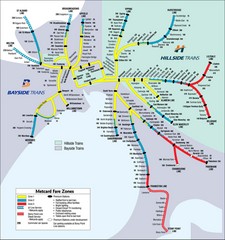
Welcome to the Los Rios Storefront
We specialize in public transport options for countries globally. We sell locomotives, metro and light rail, buses and now ferries for private or government run companies. Public transport can be the lifeblood of a country, so scroll down to see exactly what we can do for you and your commuters. Currently, we supply over 70 nations with our products, could yours be the next?
Our goal is to provide excellent products that ensure a future for our world by not harming it today, and providing excellent service that is second to none in providing what the customer wants.
Showroom guide
Building a System/ Deals & Packages
Metro or Inner City Train systems Multiple Units, Trams, Monorails
Regional Rail Systems Locomotives and High Speed Trains
Road Transport Buses
Sea Transport Ferries and Cargo Ships
Air Transport Airliners
Track and Building Information
Specials Relic Steam Engines
Offsite Showrooms
M-Liners, Commercial Aircraft
Our Business Partners
Rothstein+Lange
Terrace Hotels & Suites
If you think you have something that might sell and you would like to sell it through our storefront, fill out this application form
Sell products Appliaction
Los Rios was formed in 1997 for the sole purpose of designing a new railway network for Mikoyan-Guryevich. From there, we have perfected our track laying abilities and have developed new technologies to help railway tracks withstand greater forces, allowing for much higher speeds and much heavier loads. Our electric track is also a masterpiece. Special cables reduce friction between lines and conducters by 20%, allowing trains to travel much faster. At Los Rios, it isn't about where your destination is, but how fast and how easily you get there. That is whats important to us. Because to us, its not why but the way you move.
Our first locomotive was the diesel-electric Carada, which was designed in 1988, before the company began service. The Carada was further developed to increase power and improve fuel efficiency in 2004, before being replaced by the all new Torsion in 2009. The pride of our stock is the 400kmh Hitachi SHST. This powerful locomotive revolutionised high speed travel, and made inter-city commuting a breeze. Twice as fast as most cars, and far more efficient than an aeroplane, the Hitachi really is the paragon of performance.
Los Rios recently expanded to the air and sea, releasing the M565 Aspire Jet, the F-100 and F-250 Ferries and the capacious Vleigende Draek and Bloemfontein Class cargo ships. Soon to be released are the M555 Jet, a jet much smaller than the 565 and the Century Class Cruise Ship
So where does that leave you? At Los Rios, we know our trade and have been building systems and selling transport for many years. When you design your countries new transport network, remember, its the lifeblood of your city, if not your nation. Don't beat around with other companies who are vying for a contract. Come to us, Los Rios, the transport specialists.
We are a proud member of the GLOMC


































































